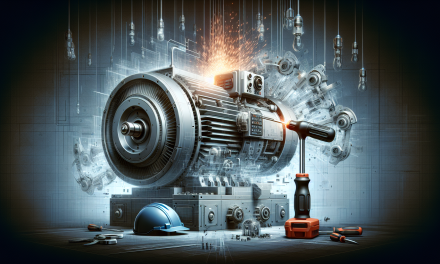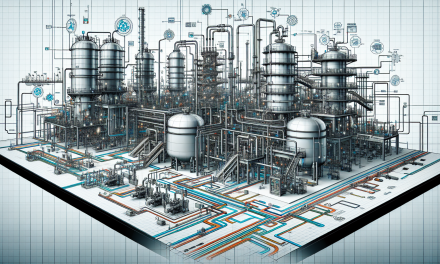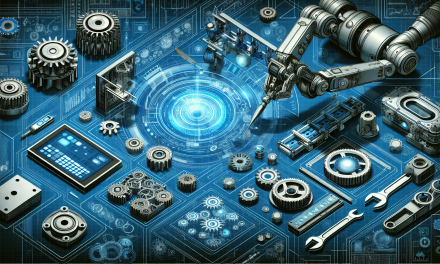Table of Contents
- Introduction
- The Importance of Effective Maintenance Management
- Key Strategies for Maintenance Management
- Training for Maintenance Management Effectiveness
- The Role of Technology in Maintenance Management
- Best Practices for Maintenance Management
- FAQs
- Conclusion
Introduction
Welcome! In the world of industrial operations, the significance of maintaining assets cannot be overstated. When done correctly, maintenance management ensures that equipment runs smoothly, downtime is minimized, and operational costs are kept in check. Therefore, understanding the nuances of effective maintenance management training becomes essential for keener operational efficiency.
The Importance of Effective Maintenance Management
Before diving into strategies and best practices, let’s first address why effective maintenance management is crucial. In today’s fast-paced industrial environment, neglecting maintenance can lead to catastrophic failures. Not only does such negligence result in financial losses, but it can also compromise safety and damage a company’s reputation. Consequently, businesses must prioritize developing a robust maintenance management strategy.
Benefits of Maintenance Management
- Enhanced Equipment Reliability: Regular maintenance checks help identify potential issues before they evolve into serious problems, thereby ensuring the longevity of assets.
- Cost-Effectiveness: Proactive maintenance saves money in the long run by reducing emergency repairs, minimizing downtime, and extending the lifecycle of machinery.
- Safety Augmentation: Well-maintained equipment contributes to a safer work environment, reducing the likelihood of accidents and injuries.
- Operational Efficiency Improvement: Effective maintenance keeps processes running smoothly, allowing teams to focus on higher-value activities.
Key Strategies for Maintenance Management
Now that we understand the importance of maintenance management, let’s explore some key strategies that enhance its effectiveness.
Implement a Preventive Maintenance Plan
Implementing a preventive maintenance plan can significantly reduce unscheduled downtimes. Regularly scheduled inspections and minor repairs prevent the occurrence of larger issues. Moreover, creating a comprehensive equipment list helps identify the maintenance needs of each asset.
Utilize Data Analytics
Data analytics provides valuable insights into equipment performance and maintenance history. By analyzing this data, organizations can establish maintenance schedules based on actual usage rather than just theoretical timelines. More importantly, predictive analytics can forecast equipment failures, enabling preemptive actions.
Encourage Employee Involvement
Employees play a pivotal role in successful maintenance management. Therefore, involving staff in the process encourages ownership. For instance, front-line employees can provide feedback about equipment performance, contributing to a continuous improvement loop.
Training for Maintenance Management Effectiveness
Training is an essential aspect of maximizing maintenance management effectiveness. Enhancing the skills and knowledge of employees leads to improved practices and outcomes. Furthermore, consider the Effective Maintenance Management Training Course, which equips individuals and teams with crucial maintenance management skills.
Key Areas to Focus on for Training
- Understanding Maintenance Procedures: Training should cover comprehensive maintenance procedures, ensuring employees know how to identify issues, rectify them, and document their actions.
- Mastering Troubleshooting Skills: Employees should gain strong troubleshooting skills to solve problems swiftly. Resources like Mastering Troubleshooting in Process Operations: A Comprehensive Guide can provide valuable insights.
- Familiarity with Maintenance Management Tools: Proper training should also include familiarization with maintenance management software and tools, empowering teams to utilize technology effectively.
The Role of Technology in Maintenance Management
Today’s maintenance management strategies heavily rely on advanced technology. Embracing digital tools not only streamlines operations but also improves data collection and analysis. Popular technologies include:
Computerized Maintenance Management Systems (CMMS)
CMMS platforms support maintenance teams in managing tasks, scheduling work, and tracking asset performance. They simplify maintenance processes and allow for efficient data recording.
Mobile Applications
With the rise of mobile technology, apps enable maintenance personnel to access information and report issues in real-time, leading to quicker resolutions.
Best Practices for Maintenance Management
To ensure that maintenance management strategies remain effective, organizations should adopt best practices.
Regular Audits and Inspections
Conducting regular audits and site inspections significantly contributes to maintaining operational efficiency. Additionally, having structured documentation aids in simplifying audits. For more insights on audits, consider exploring Elevate Your Skills with Maintenance Audit and Site Inspection Insights.
Creating and Updating Maintenance Procedures
Creating clear and concise maintenance procedures enhances understanding among teams. Regularly updating these procedures ensures relevance, adapting to changing technologies and best practices. Check out Mastering the Art of Writing Effective Maintenance Procedures for Enhanced Operational Efficiency for guidance on improving documentation practices.
Encouraging Continuous Learning
Promoting a culture of continuous learning cultivates a skilled workforce ready to tackle evolving challenges. Encouraging team members to pursue further education on maintenance management fosters growth and enhances operational excellence.
Utilizing Best Practices for Asset Management
Ultimately, effective asset management practices unlock the full potential of maintenance strategies. Understanding the life cycle of assets allows teams to plan accordingly, ensuring maintenance efforts yield the best results. Find in-depth strategies by visiting Unlocking Maintenance Reliability: Asset Management Technology Best Practices for Operational Excellence.
FAQs
1. What is the importance of effective maintenance management?
Effective maintenance management minimizes equipment downtime, enhances safety, reduces costs, and increases operational efficiency, making it crucial for any business reliant on machinery.
2. How can data analytics support maintenance management?
Data analytics helps organizations analyze equipment performance, allowing for predictive maintenance schedules based on actual usage instead of generic timelines, thus preventing failures.
3. What training methods are most effective for maintenance teams?
Hands-on training, online resources, and workshops contribute to effective training for maintenance teams, helping employees develop both practical and theoretical skills.
4. Why should I involve employees in maintenance management?
Involving employees fosters ownership, encourages feedback, and improves communication within teams. Their insights into equipment performance can lead to better maintenance practices.
Conclusion
Effective maintenance management remains a cornerstone of operational success in any industry. By adopting comprehensive strategies, leveraging technology, and investing in training, organizations can enhance performance, improve reliability, and ensure safety. Always strive for best practices and encourage a forward-thinking mindset to navigate the challenges of maintenance management. Remember, continuous improvement leads to operational excellence, so keep learning and adapting!





